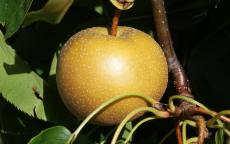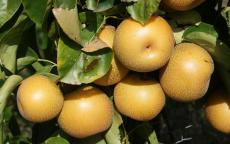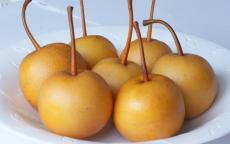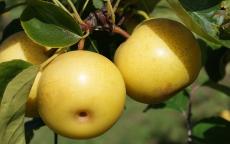- Related pear trees categories:
- Dessert pear trees27
- Cooking pear trees3
- Perry pear trees4
Asian pear trees
Hosui
Hosui has perhaps the best flavour of any Asian pear - it is very juicy and very sweet.- Picking season: Early
- Self-fertility: Not self-fertile
- Flowering group: 4
Kumoi
One of the most popular Asian pears, with a firm flesh and sweet flavour.- Picking season: Late
- Self-fertility: Partially self-fertile
- Flowering group: 2
Shinseiki
This popular early-season Asian / Nashi pear variety produces crisp sweet-flavoured pears, which can be kept for up to 3 months.- Picking season: Early
- Self-fertility: Partially self-fertile
- Flowering group: 2




